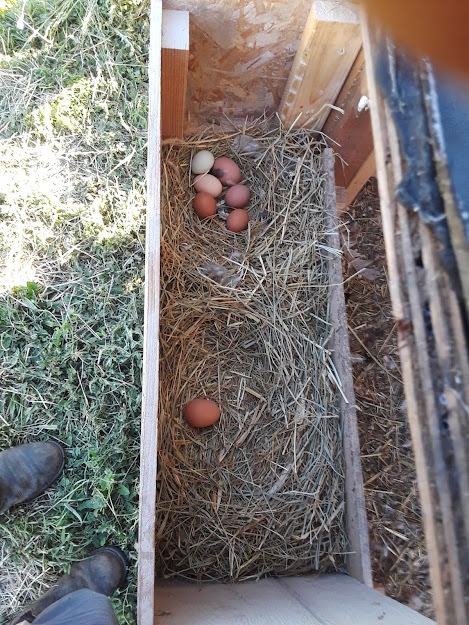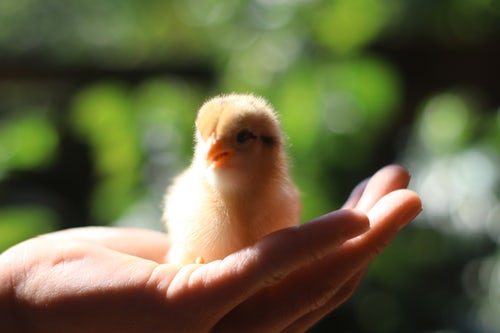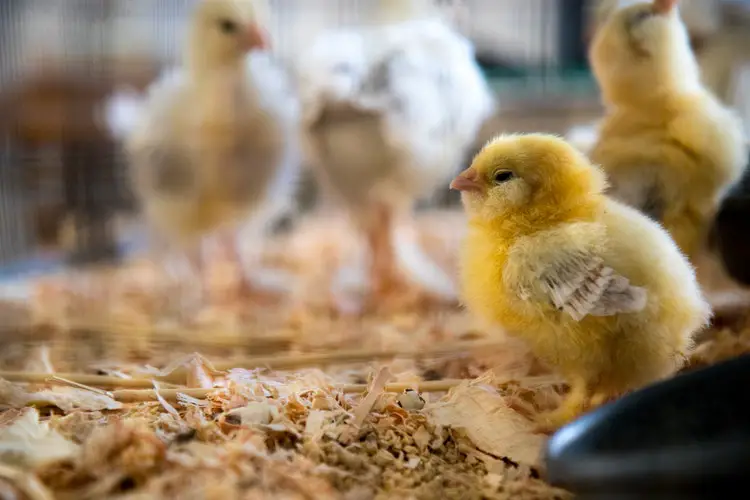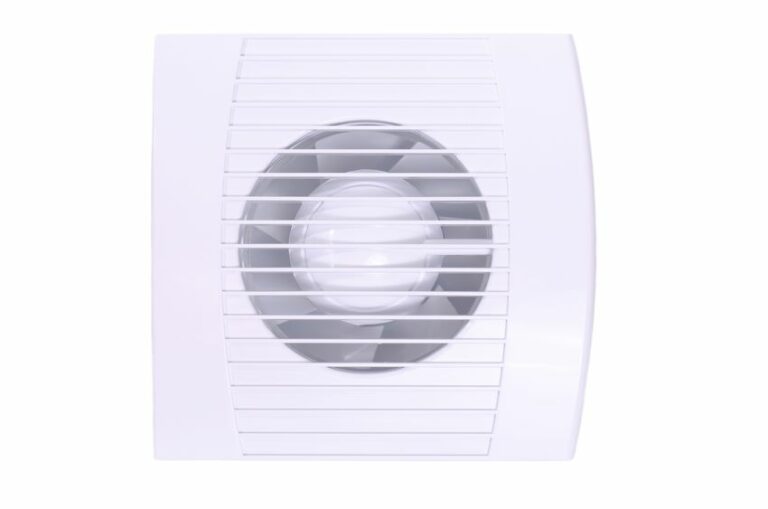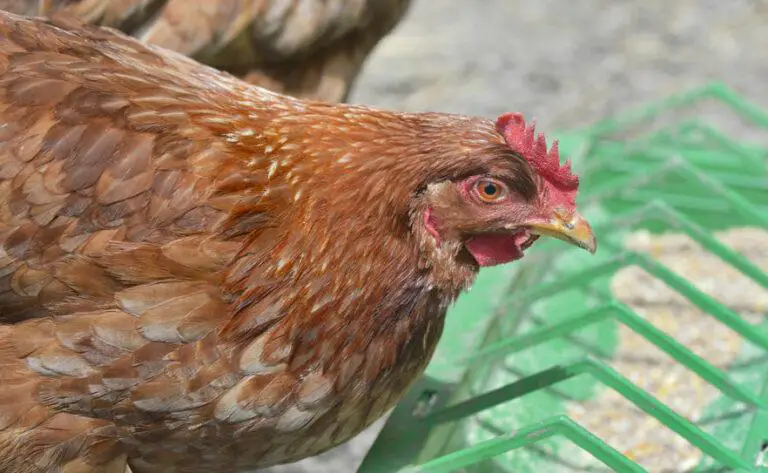How Big Should A Chicken Nest Box Be? Honestly, It’s Not That Picky
If you’re in the process of building or designing your chicken coop, you may have stumbled across this article because you’re wondering just how big should a chicken nest box be? The answer is actually quite simple. It doesn’t matter!
Ok, we should probably clarify this a little bit. Obviously if you build nest boxes the size of a tuna can, it’s not gonna work. Duh! So there has to be a minimum size cut off, which is roughly 12 inches x 12 inches x 12 inches (give or take).
But on the other side of the spectrum is just how LARGE can a nest box be? We experimented with nest box sizing when building our last chicken coop.
On one side we built a couple “regular” sized nest boxes of about 16 inches wide x 12 inches deep, and 12 inches high. But on the other side (left side in picture), we didn’t add dividers and and simply let it be. It’s dimensions are 40 inches wide x 12 inches tall x 12 inches high.
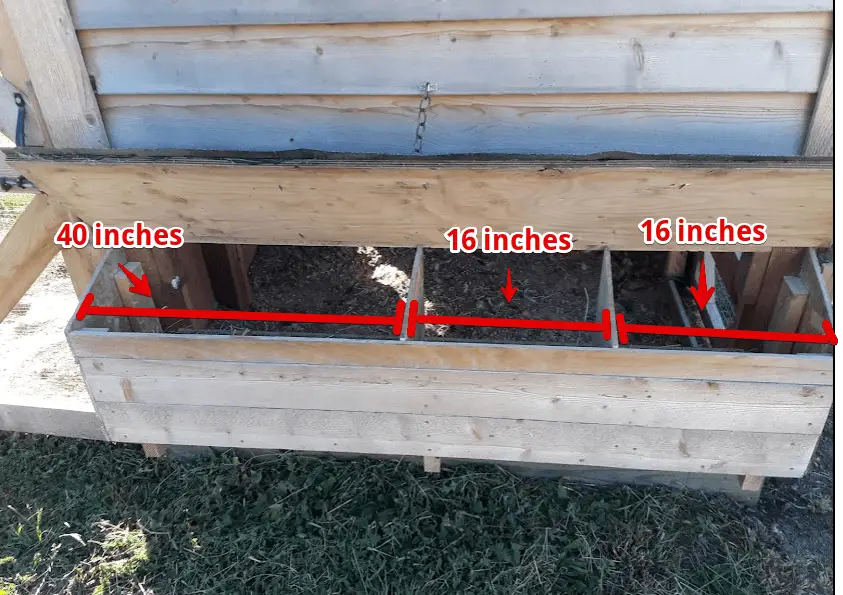
Before we delve further into our nest box set up, we’ll examine the traditional nest box which is found in some way, shape, or form, in nearly every chicken coop out there. We’ll examine the differences between the traditionally sized and larger nest boxes later on.
For information on naming your coop, see this article
I want to clarify here that there is NOTHING wrong with building your nest boxes with the more typical dimensions. We are simply wanting to show that making larger nest boxes can also work well, and can save time and money on building expenses.
Traditional Nest Box Sizes
We discuss traditional nest boxes in this article. The suggested size is at least 12 inches by 12 inches by 12 inches. Easy peasy. If you browse the internet, you’ll see this “average” can vary by a few inches in width, depth, or height.
These dimensions (or those within a few inches or centimeters of them) work very well. The logic behind it is the each chicken will get their own private space to lay their beloved egg each day (or a few times a week). We like this concept, and maybe some of the chickens prefer it as well.
But what we noticed, and what we’ve read in other forums, is that it’s not uncommon to see several hens in one nest box, all laying eggs at the same time.
No matter how many flocks we’ve owned, it’s a common occurrence. Because of this phenomenon, we decided that it may be time to mix things up a bit with our latest chicken coop. We simply made bigger nest boxes!

Non-Traditional Nest Box Sizes
When talking about non-traditional nest box sizes in this article, we’re looking primarily at nest box “compartments” really. As you can see in the photo above, we have one large compartment which is 40 inches wide, 12 inches tall, 12 inches deep. The other two boxes are closer to the more standard size next boxes of 16 inches wide, 12 inches tall, 12 inches deep.
Initially, we were planning on adding 2-3 more dividers in that 40 inch section. But after the first two were put in, it dawned on us to give this wider section a try. Heck, if it didn’t work we could simply add the dividers later!
You could also say we were lazy I suppose and I must admit, it was great not spending extra time and money on adding those other dividers.
For information on how to add wheels to your coop, read this post.
Our Results Between Traditional vs Non-Traditional Nest Box Sizes
Drum roll please…Ok, never mind. We’ll show you pictures instead. Since we built the coop in the early Spring, it took a few months before the hens were ready to start laying. When they finally did, the results between traditional and non-traditional nest boxes were pretty much even.
On some days the larger section contained more eggs. On other days, the reverse happened. It was fun to check the boxes each morning. Of course it’s always fun to see eggs in the nest boxes each day! We never tire of that.
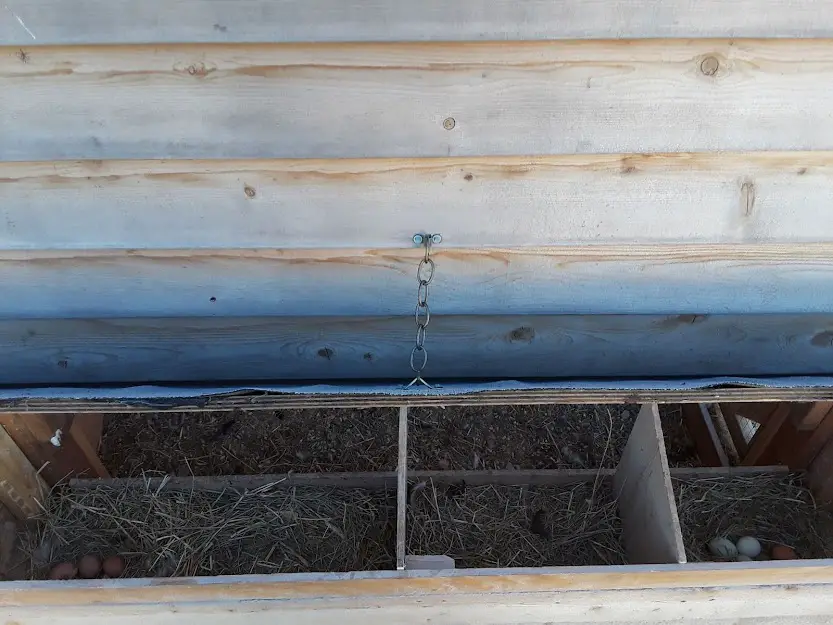
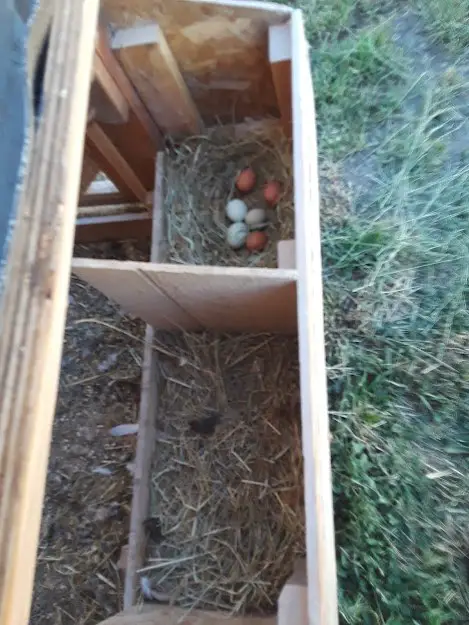
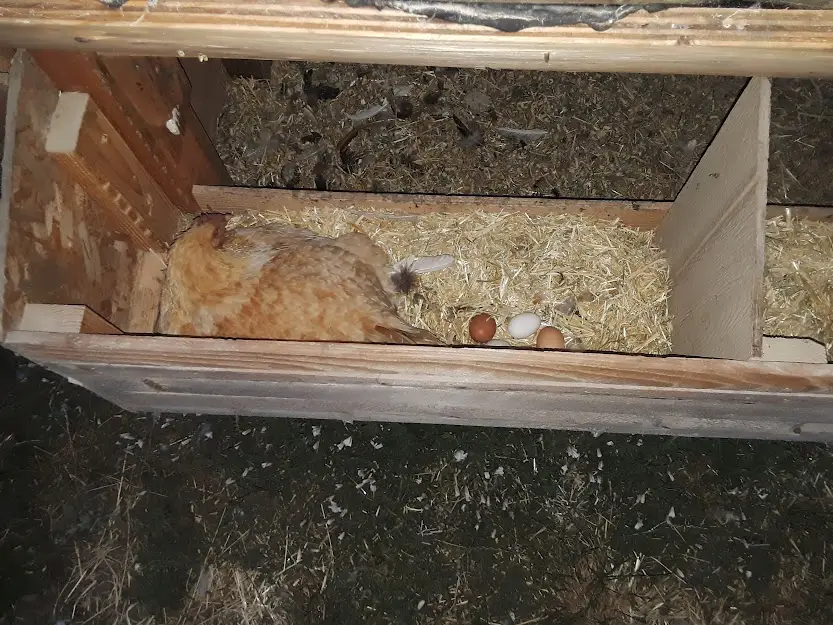
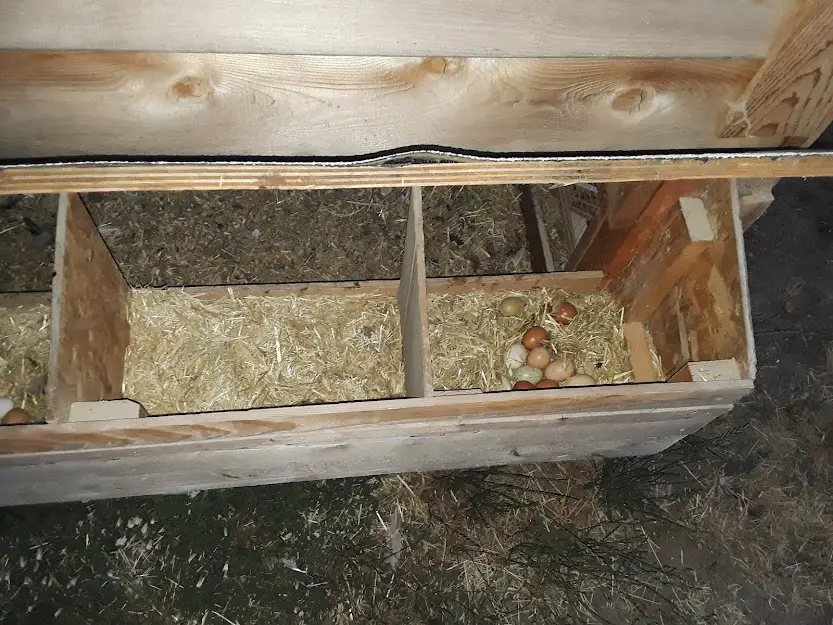
Our Conclusion (highly scientific of course?)
We are happy to report that the larger nest box seems to draw in the our egg laying friends just as readily as the smaller nest boxes.
This little experiment has been fun, and we are excited to see the flock taking to both options. For whatever the reason, the middle nest box is rarely used. It seems like there is always a neglected nest box or two in the mix. This has been the case in any coop we’ve owned. The flock decides which nest boxes they like, and stick with them, abandoning or rarely using the others.
Implications This May Have
The above results are probably not surprising to many of you. If your chickens are free ranging, you’re likely to find eggs anywhere in the yard, and certainly not in nicely squared 12 x 12 cubes.
We’ve found eggs on top of the workbench in the barn, which is a large flat surface with no bedding. We’ve found them in a dug out impression in the woods, and in all kinds of nooks and crannies.
The point is that our hens are not picky about how large or what shape our nest boxes are. As long as they can fit into a space to squat and lay down, they may lay eggs there!
So if this is the case, think of all the possibilities we can consider when building nest boxes. It really opens up some incredible ideas which are “outside the box.” We’ve added a few ideas for non-traditional nest boxes next.
Ideas For Non-Traditional Nest Boxes
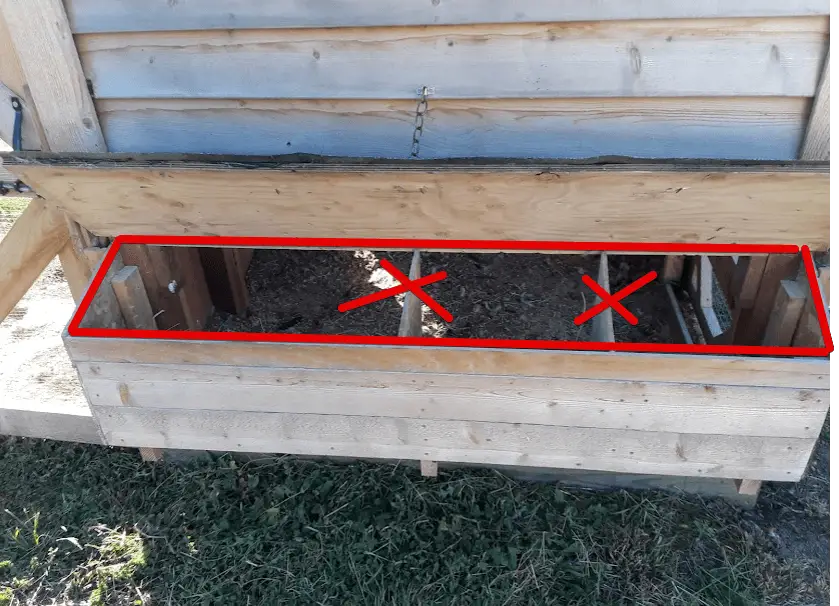
Full length nest box compartments made of wood.
Basically, don’t put in dividers. Just build the area from one side of the coop to the other as demonstrated above. This will also save you time and money by not having those additional dividers.
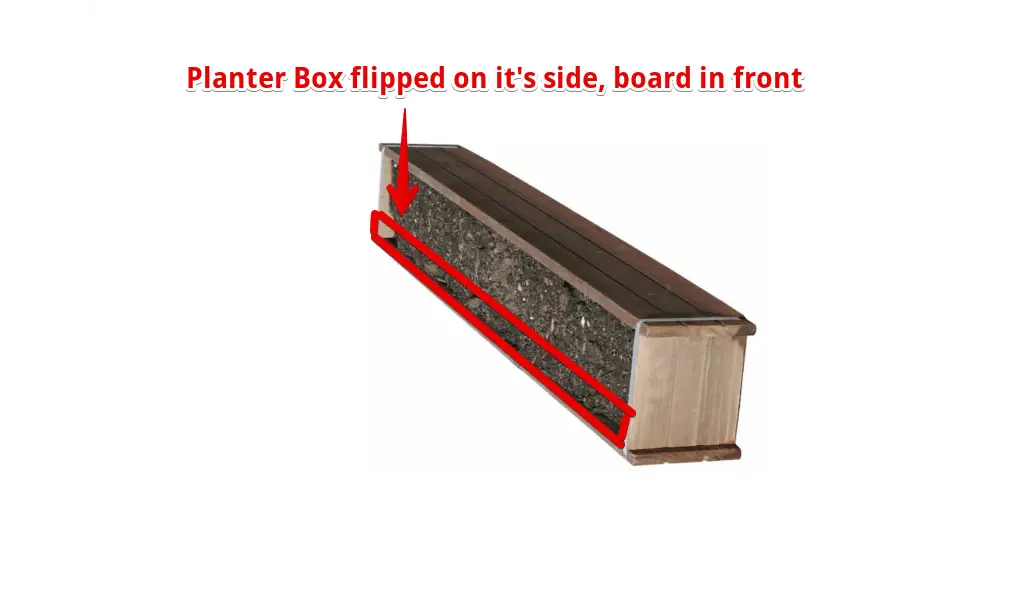
Planter Boxes
Any planter box bigger than a 12 x 12 cube will work as a nest box. Planter boxes with similar dimensions to the one picture above are ideal. To make this style of nest box, it can be laid on it’s side with a board added in the front to keep the eggs in the box.
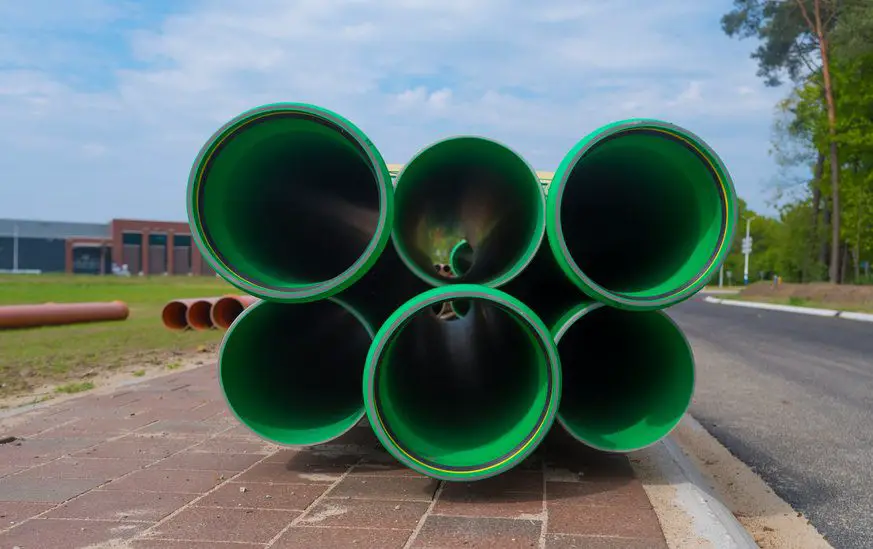

PVC or Storm Sewer Pipes
PVC or sewer pipes around 12 inches in diameter cut in half (the long way) can work well too. These can be purchased from specialty pipe stores that sell sewer or storm pipes, which are larger in diameter.
These pipes can be cut with a chainsaw but we’d recommend using an old chain you no longer need since the plastic will not be good for it. You can also cut it with circular saw. Again, cutting into PVC isn’t good for blades, so choose an old dull one if you have it.
You won’t need to add ends to the pipe if you butt it squarely up on two opposite sides, creating a nice full length nest box. You may need to smooth down the lip or edge of the pipe where the cuts were made if it is full of burrs or has any jagged pieces.
The pipe can be screwed into the floor or elevated off the ground if preferred. Once in place, line the pipes with your favorite bedding and you’re all set!
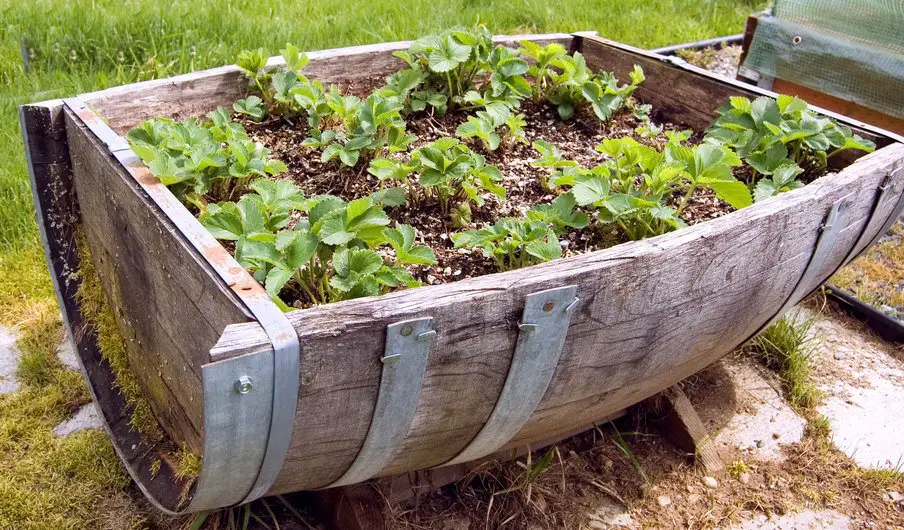
Barrel
A barrel cut in half (the long way), can work great as a nest box. Use both halves of the barrel if you have a lot of chickens!
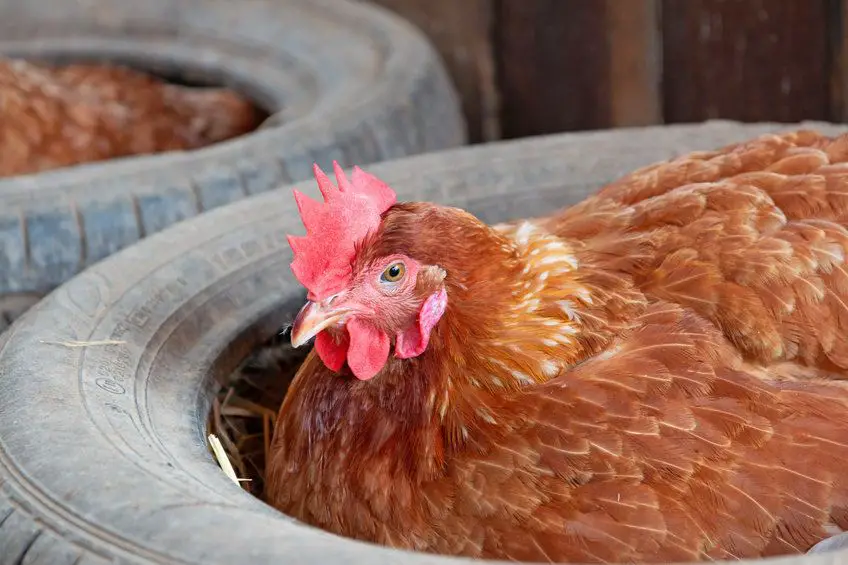
Old Tires
Old car tires can work well too! Just take a look at the above photo. Fill it with straw or your preferred bedding, and the girls will be ready to start laying.
All the above ideas are really just scratching the surface! If you tap into your imagination, there are likely dozens of other objects or materials that will work too. Many of them can be found very inexpensively or even free at times! Check Craigslist or other online marketplaces.
Other Considerations for Non-Traditional Nest Boxes
We’ve covered how it’s possible to use non-traditionally sized nest boxes. But is it really that simple or are there other factors we should consider.
Should the nest box be covered?
Our over-sized nest box is covered, which is really a nice feature to have. The hens do like to have privacy when laying if at all possible.
If you’re using one of the ideas above, or your own creation, you may want to fashion a lid over it if at all possible since the girls may appreciated the added protection. It may not be necessary, but will likely add some appeal to it for your hens.
Are Any Materials Off Limits?
Most any object with the right dimensions can work nicely as a nest box. But you should avoicd items that could harm your chickens or be made of the wrong materials.
For example, we briefly considered using a large cardboard box as a nest box. But if you know chickens at all, you’ll know it would not hold up for long! They like to scratch and pick at everything, and the cardboard would be destroyed in short order.
Also, certain types of wood should not be used as they can contain chemicals that are harmful to your flock.
Will Chickens Fight For The Space?
We considered this angle too, which is why we felt it appropriate to keep a couple private, traditionally sized nest boxes. They seem to interact harmoniously with each other for the most part, some occasional squawking, but it was generally friendly.
They actually seemed to enjoy cramming in next to each other! Having said that, there may be some chicken breeds or individual chickens who prefer to lay their eggs in private.
Conclusion
We hope we’ve provided some food for thought on the topic of chicken nest box sizing. Our goal in it writing it was to simply show that the traditional 12×12 cube shaped nest boxes will work nicely, but doesn’t have to be the ONLY game in town.
If none of the ideas above catches your eye, you can always buy a new one. There are dozens to choose from online at Amazon or at your local farm store.
Good luck raising your chickens and building your chicken nest boxes! Happy ‘chickening.’

